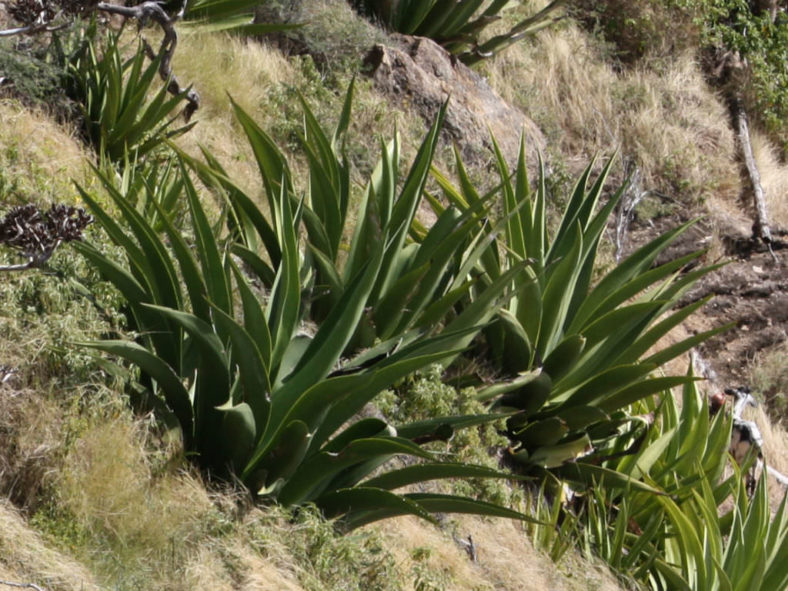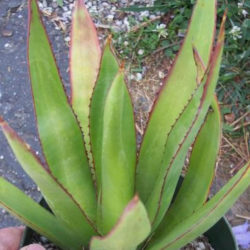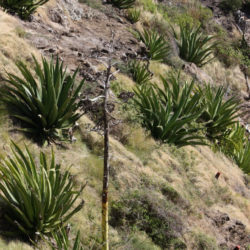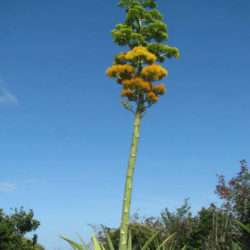Scientific Name
Agave karatto Mill.
Common Name(s)
Antigua Agave, Century Plant, Maguey, West Indian Dagger
Synonym(s)
Agave keratto, Agave kerrato, Agave kerratto
Scientific Classification
Family: Asparagaceae
Subfamily: Agavoideae
Genus: Agave
Description
Agave karatto is a succulent plant that forms rosettes of dagger-like, dull grass green leaves with a long terminal spine and small, sharp teeth along the margins. The rosettes grow up to 13.1 feet (4 m) in diameter, sometimes producing offsets around the base. Leaves are straight or curved outward, occasionally slightly twisted, reaching up to 7.2 feet (2.2 m) long and 1 foot (30 cm) broad.
The golden yellow flowers appear in clusters on an erect, up to 26.2 feet (8 m) tall spike with up to 5 orders of branching near the top. After blooming, numerous bulbils are borne among the flowers or sometimes along the lower portion of the spike, forming new plants which shortly drop to the ground.
Agave karatto is the national flower of Antigua and Barbuda.
Origin
Agave karatto is native to the Windward Islands of the West Indies, including Antigua and Barbuda.

Hardiness
USDA hardiness zone 9b to 11b: from 25 °F (−3.9 °C) to 50 °F (+10 °C).
How to Grow and Care
Agave is not a difficult plant to grow. They're slow-growing and dramatic and will even thrive on a bit of neglect. If you're the type of person who likes to fuss with houseplants and water a lot, Agave is probably not the plant for you. If, however, you're the type of person who likes to set it and forget it, and you have a sunny window, Agave might be the way to go. Be aware that some large varieties will eventually outgrow your room (unless you have a large greenhouse), and Agave can be aggressive. They have irritating sap and sometimes very sharp thorns that can cause injuries to small children and even pets.
In general, Agaves do not need to be repotted every year. Most species commonly found in cultivation grow slowly and take a long to outgrow their pot. It's also best to handle your Agave as little as possible since they do not like to be disturbed. When you do repot, refresh the spent soil with a new potting mix and make sure the plant is firmly anchored in its pot.
See more at How to Grow and Care for Agave.
Links
- Back to genus Agave
- Succupedia: Browse succulents by Scientific Name, Common Name, Genus, Family, USDA Hardiness Zone, Origin, or cacti by Genus
Photo Gallery
Click on a photo to see a larger version.


